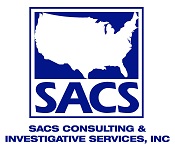In the wake of tragic deaths and injuries in Boulder and Atlanta, many are wondering how did this happen again. We all remember Las Vegas, Parkland, and Sandy Hook like it was yesterday.
According to the 2019 FBI Active Shooter Incident Report, there were 29 separate cases. 67% of the incidents were over before the police arrived on the scene. In 2013, there were 16 active shooter incidents.
The US Department of Homeland Security defines an active shooter as a person who actively engages in killing or attempting to kill individuals in a confined and populated area.
We also know, these incidents don’t just happen; they are planned.
Type of Active Shooters
Type I: Criminal Intent
This is when the shooter has no prior connection with the area or the people they are shooting, such as the tragedy in Las Vegas that killed 58 people.
Type II: Customer, Patient, or Employee
Violence occurs at a place the shooter has often frequented (i.e., Parkland, Atlanta), and the shooting happens during business hours.
Type III: Worker to Worker
This is one-on-one violence and spawned by personal conflicts on the job.
Type IV: Domestic Violence
These shootings often occur when the victim is preparing to leave, has filed a restraining order, or is leaving work. Many of these shootings happen in parking lots.
Type V: Ideological Violence
These shootings occur based on religion (The Tree of Life Synagogue shooting) or political zealot believing the persons they are killing will do them harm.
A Life and Death Situation – What Can You Do?
To keep your organization prepared, we recommend the following course of actions on an annual basis:
- Complete an Active Shooter Prevention and Response training for everyone.
- Upon completion of the training, establish a protocol for responses. Consider investing in more security cameras, automatic door locks, and other technology that can alert others quickly.
- Evaluate a history of violent actions or possible explosive situations. Sometimes there is a pattern of activity with employees, but this is not always the case.
- Have a plan for the trauma aftermath. Provide free, onsite counseling, give employees extended leave of absences, and communicate how you will change things to provide a safer environment for all. We can complete a physical audit and make concrete recommendations for improvement.
“Everyone needs to be alert to the behavior of others. Shooters talk about their frustration with others. They may even make threats to harm others. Please take all rhetoric SERIOUSLY and report it to your manager and HR. If you see something in an email, on social media, or hear something on the phone, report it right away to your place of employment, your police department, and even the FBI. If you see something, say something,” says Tim Dimoff, President of SACS Consulting and Investigative Services.

